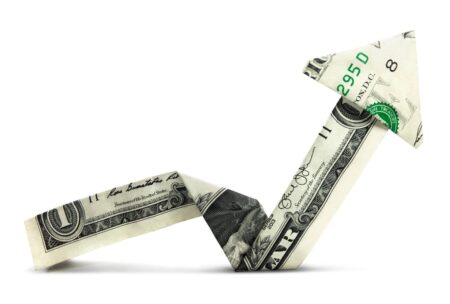Former hedge fund star and unabashed digital asset evangelist, Mike Novogratz, believes traditional finance will drive bitcoin’s next evolution. He also rails against outdated regulations, Baby Boomers and America’s obesity problem.
By Maneet Ahuja, Forbes Staff
Well before cryptocurrencies were back in vogue, Galaxy Digital founder and chief executive officer Mike Novogratz was already an established Wall Street force. After starting his investment career at Goldman Sachs in 1989, where he spent a decade and became a partner while the firm was still privately held, Novogratz went on to lead a macro-focused hedge fund for private equity firm Fortress Investment Group, and later to become the firm’s president.
Now head of crypto investment firm and merchant bank Galaxy Digital, Novogratz was one of the most vocal early adopters and committed backers of digital assets. Since launching in 2018, Galaxy Digital, which trades on the Toronto Stock Exchange, has been at the forefront of the industry–trading, lending and investing in 223 portfolio companies spanning the digital asset and blockchain economy. As of the end of January 2024 Galaxy had $6 billion in assets under management and as the firm’s largest shareholder Novogratz’s ownership stake currently amounts to about $2 billion. Not all of Novogratz’s crypto bets have been winners. He was a big backer of Luna, the token connected to algorithmic stablecoin Terra USD, which failed spectacularly in 2022 erasing some $50 billion in value in less than a week. Novogratz was so enamored by the stablecoin that he tattooed its logo on his arm.
Seeking to overcome the turbulence of 2022 that culminated in the collapse of Sam Bankman-Fried’s FTX, Galaxy and other companies are seeking to broaden access to digital assets. Last month, the U.S. Securities and Exchange Commission approved 10 applications for the first U.S.-listed spot bitcoin exchange-traded funds in what is being described by many as a watershed moment for the broader crypto industry.
The following interview took place recently at the iConnections Global Alts summit in Miami. —Maneet Ahuja
Forbes: Mike, a lot has changed from one year ago. Can you give us a 30,000-foot view regarding where we are–both from a macroeconomic perspective and a crypto-industry perspective?
Mike Novogratz: In the realm of cryptocurrency, we witnessed a significant shift in 2021 as the Federal Reserve adjusted its policies and began aggressively hiking rates. Traditionally, one might expect hard assets like crypto and gold to decline under such circumstances. The decline was made worse by widespread fraud and misconduct within the industry, particularly exemplified by entities like Celsius–causing embarrassment and pessimism for crypto’s future. The crypto market, which is fundamentally built on trust, suffered a loss of confidence due to these factors, resulting in a classic market capitulation where sentiment turned overwhelmingly negative. Despite the prevailing pessimism, moments of extreme downturn often present lucrative buying opportunities. For instance, in hindsight, bitcoin’s price drop to $7,000 in 2018 proved to be an excellent entry point for savvy investors. The tide began to turn with the Federal Reserve signaling a shift toward a rate-cutting cycle. Also, key events such as Grayscale’s legal battle with the SEC and endorsements from figures like Larry Fink–one of the world’s most influential asset managers–contributed to restoring confidence in the crypto industry.
Then the resolution of concerns surrounding major exchanges like Binance helped alleviate systemic risks, paving the way for a more stable environment. Looking ahead though, while regulatory uncertainties persist, bipartisan consensus on legislative initiatives–except from a few such as Elizabeth Warren–suggests the imminent establishment of a regulatory framework. Coupled with the recent introduction of crypto ETFs and the incoming rate cuts by the Federal Reserve, this sets the stage for increased institutional adoption–which is very thrilling.”
Forbes: We have seen bitcoin rise 150% last year. Part of that rise has to do with that limited supply of bitcoin in circulation–more than 70% of the supply in the market did not change asset ownership. Why is that so?
Novogratz: Well, I think you have to think back to the creator of bitcoin, Satoshi Nakamoto, and the original white paper and code. The pseudonymous creator of bitcoin originally penned the cryptocurrency’s white paper as a response to the growing concerns regarding centralized financial systems.
The essence of Nakamoto’s white paper lies in its vision of decentralization, which serves as a stark contrast to the monetary policies observed under the most recent U.S. presidencies. During the tenures of both Donald Trump and Joe Biden, government spending skyrocketed, particularly evident in Trump’s pre-Covid spending spree. This normalization of excessive spending, with the federal government consuming roughly 25% of GDP, marks a significant departure from historical norms. Reflecting on my experience at the Office of Management and Budget during the Reagan administration, I recall the adherence to a set of fiscal rules, including a target of 20% government spending and taxation. However, the current trajectory sees government spending surpassing 25% of GDP while tax revenues lag behind, leading to ballooning budget deficits.
Despite the urgency of the fiscal crisis facing our nation, there appears to be a lack of political will in addressing the issue. Calls for measures akin to the Simpson-Bowles bill, which aimed to tackle budget deficits and restore fiscal responsibility, seem to have fallen by the wayside. This neglect of fiscal discipline poses a pressing challenge that demands attention and action from policymakers. I believe that addressing the ballooning budget deficit and restoring fiscal balance must become a priority on the political agenda. Failure to do so risks exacerbating the fiscal crisis, undermining economic stability, and compromising the well-being of future generations.
Forbes: Why is that not on the agenda?
Novogratz: We’ve recently experienced a prolonged period of low interest rates, where it seemed like money was abundant and easily accessible, reminiscent of the principles espoused by modern monetary theory. This era of seemingly endless liquidity appeared to be working well, with low inflation and sustained economic growth. However, what often gets overlooked is the devastating impact of inflation on the average American. While attendees of conferences like this one may have the resources and knowledge to navigate around inflationary pressures, the reality is starkly different for many Americans. Over the past decade, we’ve witnessed a significant rise in the cost of living, particularly evident in the soaring prices of housing. For instance, the average house price in 2010 was $289,000, whereas in 2024, it has surged to $400,000, effectively doubling in just over a decade. So imagine being a young kid out of college today, realizing that your wages or salaries were not doubled at your analyst job at Goldman Sachs–never mind blue collar jobs and other normal white-collar jobs.
This rapid inflation of assets and goods has left many Americans feeling economically disenfranchised, contributing to the rise of populism in recent years–with hard sentiment that nothing is working out for them, and a complete disdain for Washington D.C. and elite institutions. As we grapple with this cycle of economic challenges, the prospect of finding a solution seems daunting. While some may hope for a transformative breakthrough in technology, such as the widespread adoption of AI leading to unparalleled productivity gains, the likelihood of such a scenario remains uncertain.
Forbes: Let’s turn to bitcoin and its role as a store of value. We have spot bitcoin ETFs, which have just come to market–one of which is from your company. What kind of demand do you see for these products?
Novogratz: The reality is, the adoption of bitcoin has been a generational shift, with younger generations embracing it as a means of rebalancing the economic scales inherited from the Baby Boomers. As registered investment advisors cater to this demographic shift, the emergence of ETFs tailored to their preferences marks a significant milestone in bitcoin’s journey towards mainstream acceptance.
While some may dismiss bitcoin’s value as merely a social construct, it’s important to recognize its significance as a store of value, akin to gold. Despite the skepticism from traditional investors like Ray Dalio, the growing acceptance of bitcoin among RIAs and retail investors alike is indicative of its enduring relevance in the financial landscape.
Looking ahead, I anticipate a gradual but steady increase in bitcoin allocations within investment portfolios, as RIAs recognize its potential for diversification and wealth preservation. This influx of capital from the traditional financial sector represents the next phase of bitcoin’s evolution and promises to be a significant catalyst for its continued growth.
Forbes: Let’s talk about outflows. What are you seeing there, including what happened at Grayscale?
Novogratz: Grayscale’s bitcoin product faced SEC scrutiny and criticism for its high fees and structural flaws, leading to investor losses when the fund traded at a premium. As arbitrage opportunities dwindled, investors turned to alternative ETFs offered by industry giants like Invesco, BlackRock and Fidelity for lower fees and improved transparency. This shift underscores the significance of trust and cost-effectiveness in investment choices, with Grayscale’s product losing appeal to more efficient alternatives in the market.
Forbes: It’s a competitive market, and you were saying there are going to be two to three winners. You mentioned BlackRock. Who are the others?
Novogratz: Well, we launched our initiative with Invesco, but the uptake has been slower than anticipated. We’re optimistic that within the next six months, after getting onto platforms like Salesforce and gaining approval from institutions like Morgan Stanley, we’ll see significant progress. BlackRock and Fidelity are also poised to join this group.
As for why invest now, it’s worth noting that while these businesses are crucial for asset gathering, they aren’t highly profitable due to low fees. Nonetheless, they represent excellent consumer products with significant potential for scalability and brand recognition.
Forbes: Do you think the new ETFs will drive more retail demand? Where do you see growth being strongest over the next 12 months?
Novogratz: Yes. The introduction of ETFs as stock-like products not only provides more capital-efficient trading options but also opens the door for increased leverage. We anticipate a gradual institutional creep into the market, starting with IRAs and extending to pension and endowment funds. The inevitability of crypto’s integration into the financial landscape, coupled with expected legislation within the next 18 months, will further catalyze investment.
Politically, bipartisan support for crypto legislation, as evidenced by conversations with figures like Hakeem Jeffries and Tom Emmer, underscores the broader acceptance of digital assets. This legislative clarity will encourage more investors to enter the market.
While growth may not mirror past frenzies, we’re observing a steady uptick in capital and client acquisition within the asset management sector. Over the next 12 months, we anticipate significant retail demand growth, driven by increased awareness of the long-term potential of crypto assets.
Forbes: Do you think that the SEC is going to approve an ether ETF next? What about the Coinbase lawsuit?
Novogratz: The recent legal battle over the bitcoin ETF highlighted the inconsistencies in the SEC’s approach to regulating crypto assets. The court essentially criticized the SEC for denying a spot bitcoin ETF while allowing futures ETFs, pointing out the illogical reasoning behind the decision.
Moreover, the current political landscape, characterized by a conservative-leaning Supreme Court, is pushing back against government overreach. This sentiment extends to the SEC’s regulatory actions, which have faced scrutiny for their perceived overreach.
Looking ahead, regardless of the political affiliation of the next SEC chairperson, there’s a likelihood that many of the lawsuits initiated under Gensler’s tenure will be dropped. This reflects the growing recognition of the inevitability of crypto’s integration into the financial system.
However, the regulatory uncertainty surrounding the classification of digital assets as securities or commodities remains a significant challenge. The outdated Howey Test, designed for traditional securities, doesn’t adequately address the complexities of blockchain-based technologies. This ambiguity not only hampers industry growth but also imposes financial burdens on businesses navigating the regulatory landscape. Clear guidelines from Congress and the White House are urgently needed to provide certainty and foster innovation within the industry.
Forbes: On that note, you have said that because of the regulatory challenges here in the U.S., you are going to be moving a significant amount of your operations overseas. Can you discuss a bit about what you are going to be doing while waiting for the regulation landscape to settle?
Novogratz: The regulatory uncertainty plaguing the crypto industry is profoundly frustrating, particularly for conservative firms like ours that prioritize compliance and risk mitigation. While some companies may adopt a more rebellious stance, we understand the importance of adhering to regulatory standards to protect our clients and maintain our integrity.
However, this commitment to compliance comes at a considerable cost, exacerbated by the lack of clarity in regulatory guidelines. This uncertainty forces us to allocate substantial resources to legal and accounting fees, detracting from our ability to innovate and compete effectively.
Of particular concern is the regulatory environment in New York, where stringent requirements add an extra layer of complexity and cost for crypto businesses. This additional burden further impedes our ability to thrive and hampers the growth of the industry as a whole.
Ultimately, we urgently need clear and comprehensive regulatory frameworks at both the federal and state levels to level the playing field and enable sustainable growth within the industry. Only then can we unlock the full potential of crypto innovation in the United States and ensure its continued success on the global stage.
Forbes: So to close, I want to go back to the topic of macroeconomic outlook. What is your opinion on a soft landing? What is your view for 2024?
Novogratz: The discussion surrounding a potential Fed rate cut amid easing inflation warrants a closer examination of the broader economic landscape. While there’s speculation about a rate cut in March, the current data doesn’t conclusively support such a move, indicating a degree of uncertainty in the timing and necessity of monetary policy adjustments.
The underlying resilience of the economy can be attributed to several factors. Firstly, unprecedented levels of government spending, particularly on infrastructure, have provided a substantial stimulus that isn’t directly impacted by interest-rate fluctuations. This sustained injection of funds into the economy has helped to prop up growth, offsetting potential headwinds from monetary tightening.
Additionally, certain sectors such as housing and automotive continue to exhibit strength, despite broader economic challenges. The persistent shortage of housing units coupled with robust demand has kept the construction sector buoyant, contributing to overall economic activity. Similarly, the auto industry’s ability to weather labor strikes and maintain production levels underscores its significance as a major employment generator and economic driver.
It’s essential to note that while these sectors remain resilient, there are still concerns about the overall pace of economic growth and the potential for inflationary pressures to persist. The Federal Reserve’s decision-making process will likely hinge on a nuanced assessment of these various factors, with a keen focus on maintaining price stability and supporting sustainable economic expansion.
Forbes: Can you give thoughts on the state of politics and your outlook for the 2024 election?
Novogratz: Over the past 35 years, the debt-to-GDP ratio has skyrocketed from 50% to 125%, with projections pointing towards a staggering 250%. Additionally, America has seen significant societal shifts, with the average American now 35 pounds heavier and life expectancy declining for the first time in history.
It’s evident that the Baby Boomer generation, which has dominated politics for decades, has failed to address crucial issues, leaving a legacy of economic disparity and social challenges. This disparity highlights the generational injustice perpetuated by prioritizing short-term gains over long-term sustainability.
It’s time for a change in leadership, a shift away from the entrenched politicians like Nancy Pelosi, Mitch McConnell and Chuck Schumer. We need fresh faces with new perspectives, individuals like Dean Phillips, who prioritize the greater good over personal gain. The current political stalemate and embarrassment on the global stage demand a new approach, one that moves beyond the divisive rhetoric of Trump and Biden.
While the outcome of the upcoming election remains uncertain, it’s clear that we need a seismic shift in our political landscape. Whether through new leadership or a reinvigorated commitment to change, it’s imperative that we break free from the status quo and forge a path towards a brighter future for all Americans.
Forbes: Thank you.
Featured in a recent edition of Forbes Billionaire Investor newsletter.
MORE FROM FORBES
Read the full article here
















